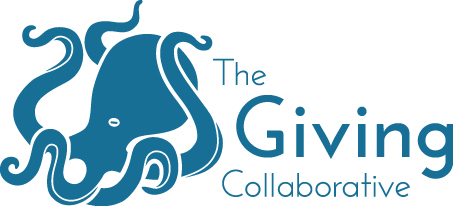Are you doing that annual dance with your CFO to keep professional membership and conference fees from being cut from your development/advancement budget? One CFO I worked with years ago eliminated the money from my budget, never to be seen again. He reasoned that since I didn’t need the funds that year (because he wouldn’t let me spend the money), then I certainly didn’t need them in the future. Okay then . . .
So much of the work we do in fundraising is quantifiable and easily compared to prior programs to demonstrate growth, outreach and effectiveness. So why not take a similar approach to obtain budget funds for professional membership and conference fees? Just as you need to make a strong case to inspire support from your donors, the same measured approach can be effective in convincing your CEO, CFO or VP to support these budget requests.
Initiate a new strategy or initiative that you learned through continuing education or networking with colleagues from other not-for-profit organizations, and then track its success. Promote the cost-per-dollar-raised and net proceeds, compare these to the cost of continuing education and memberships, and demonstrate that professional education is a wise investment. You can formalize this approach with a case for support for your program.
Sometimes jargon can get in our way. Rather than talk about cost-per-dollar-raised, which isn’t in the language of CFOs and business leaders, flip these numbers to give you the return-on-investment. They’ll grasp this instantly, and who’s to argue with a project that returns four, five or ten times the amount invested? But be prepared to back up your numbers with a detailed budget so that it doesn’t sound like pie-in-the-sky.
Overall, what would your organization’s bottom line look like without philanthropic support? What equipment was purchased, or programs funded, with contributions, and would these items have been acquired without donor support? We’re in a numbers-driven business, so let’s leverage them to support educational opportunities that help us increase philanthropy and allow our organizations to better support the communities we serve.
An additional approach for CFREs….
A former VP of finance once told me that conference fees requested by departments throughout the organization had been eliminated from that year’s budget. I let him know that I would lose my CFRE accreditation if I didn’t earn enough continuing education credits. Working at a hospital, he likened this to the continuing education programs required for nurses, therapists and other caregivers. From that perspective, he was able to restore the conference resources to my budget. I had to pay the membership fee out of my own pocket, but that was a trade off I was happy to make.
Other educational opportunities
In addition to (or in place of) conferences, you can access a variety of resources to advance your professional knowledge:
Journals – The Chronicle of Philanthropy and other professional journals provide hard copy and online readers with fundraising news, research, feature stories, and profiles of organizational and individuals. These publications often require a subscription, but most also have free information available on their websites. The Chronicle also runs educational webinars — most for a fee, but some that are free to all.
Professional membership organizations – Most offer their own journals and/or newsletters to members. Their websites also feature articles, news, updates and legislative/governmental affairs, with some free to nonmembers. Most of these organizations offer educational webinars, both live and through an online library: members of AFP and AHP pay a fee for webinars, while CASE and NEAHP webinars are free to members.
Colleges & universities – A growing number of institutions of higher learning offer courses and degree programs in philanthropy. Business courses and MBA programs will also add to your body of knowledge. This is can be an expensive option, so ask your human resources department if they offer tuition reimbursement.
Businesses – Many for-profit companies serving the philanthropy sector have their own webinars, newsletters, and blogs. Some of these offerings are sales tools, as one would expect, while others involve outside experts objectively discussing topics pertinent to each company’s niche.
Social media – Most of the above organizations also distribute free, educational information through platforms such as Twitter, LinkedIn, and Facebook. Connect yourself, identify and follow thought leaders, and share the best of their thinking with others.
In summary
Educational opportunities abound, both free and for a charge. We need to build time into our weekly schedules to stay on top of our field for the benefit of our organizations, the communities we serve, and, just as important, for our own professional growth and advancement.
We’d like to follow-up this article with success stories of fundraising initiatives that were created as a result of information learned at a conference or other educational program – especially if you used this as leverage to maintain or expand your department’s conference budget. Please write back to share your experience.
“Education is the most powerful weapon which you can use to change the world.” — Nelson Mandela


About The Author: Richard Solomon
Rich is The Giving Collaborative’s Vice President and Senior Consultant and an original member of the TGC team. He is an accredited fundraiser with 29 years of experience in managing successful philanthropy programs. He previously served as Executive Director of the New England Sinai Hospital Foundation in Stoughton, Massachusetts, where he led the philanthropy program for nine years. Rich is a past President and current board member of the New England Association for Healthcare Philanthropy (NEAHP). He previously served on the Board of Directors of the Association for Healthcare Philanthropy (AHP) and as a Trustee of the AHP Foundation. Rich also serves on the Board of Directors of Swim Winchester and is directing the organization’s feasibility study for a $15 million capital campaign.
More posts by Richard Solomon